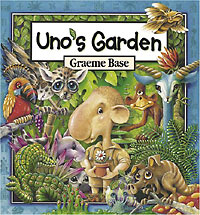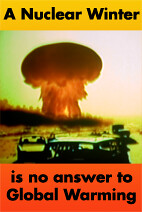Environmental issues for kids through story telling
 One of Jacob's birthday presents is the new book by Graeme Base, Uno's Garden, which was from my parents. (It was my suggestion actually…) I think it is a lovely book, and want to share it with you. I haven't had time to think it through enough to write my own review, so I'm quoting from the review of Uno's Garden from the ABC website arts blog, Articulate:
One of Jacob's birthday presents is the new book by Graeme Base, Uno's Garden, which was from my parents. (It was my suggestion actually…) I think it is a lovely book, and want to share it with you. I haven't had time to think it through enough to write my own review, so I'm quoting from the review of Uno's Garden from the ABC website arts blog, Articulate: [Base] has turned his attention to the balance between humankind's development and the environment; using numbers, puzzles and his fantastical illustrations to explore the issue.For a while now, my partner and I have been talking about how to introduce environmental issues to Jacob. We want him to know about the drought and the importance of saving water, and about global warming and saving electricity, but we want to do this in ways that don't scare him with end-of-the-world scenarios and paralyse him with fear. We want him to be part of the solution - to know how we can act to reverse this.
Base told Articulate he believes the book, though sad in parts, is ultimately an optimistic story about how human beings can learn to live within their environment.
"There is a sad moment but in any tale in any story, you do tend to go to a sad or a dark place before you begin that ramp back up to the end and this is no exception. The important thing about that moment in the book is that it is the garden that lives on. It's Uno's legacy and it's very, very empowering and it's all to do with Uno's children and grandchildren taking that legacy and then discovering the animals again and making sure that when they rebuild their city, that the numbers are in control."
I think that children's stories, such as Uno's Garden, are a great way to do this because they are fun, entertaining, and engage all their senses. If you're interested in other children's writers and illustrators who tackle environmnental issues, I suggest Jeannie Baker, whose books (Where the Forrest Meets the Sea, Rosie Dock and others) introduce kids to environmentally ideas very subtly, and Allison Lester, whose Are We There Yet? (which I've reviewed here previously) introduces kids to the natural wonders of Australia through the adventure of travel.
The key things to remember are kids don't want to feel they're being preached to or that they are 'learning' something, or that their environmentally-conscious actions, such as turning lights off and taking shorter showers, are onerous. Make it fun, as these books do.
Labels: blogging, children, environment, global warming, internet










11 Comments:
Thank you. I am looking to get some good children's books and this one looks absolutely perfect.
I love "Where the forest meets the sea".
I like Hunwick's Egg by Mem Fox, not to be confused with Hedwig and it has nothing to do with an angry imperial measurement.
Stephen, I'm not usually so dense, but I don' get the angry imperial reference.…? And Cristy, my eldest boy is pretty fond of 'Where the forrest meets the sea' too, though I sometimes wonder whether he just panders to my preference for it when I suggest reading it at bedtime!
Since it's leading up to Christmas (aagh!), and books are the "gifts that keep on giving", perhaps readers would like to share as many of their favourite kids books as possible here. I'm sure more than a few of us would appreciate the suggestions.
May I suggest that commenters also indicate what kids' age group(s) they think the books are suited to? And indicate whether they follow the theme of stories around environmental issues? Ta.
hmmm, I was trying not to write the name of a controversial R rated movie on your blog anywhere near a discussion of kids books. But the imperial measurement in question is about 2.14cm.
Hunwick's Egg started life as a Mem Fox take on the easter bilby and ended up a story about a bandicoot that finds and loves/befriends an egg shapped rock.
Annalise, at 2 years loves the story being read to her and the suggested reading age is year 2.
The art work is lovely and the story introduces all sorts of Australian animals.
On the subject of environmental themese, Graeme Base's The Waterhole is excellent, because the issue – a waterhole drying up, and the animals being short of water – are so immediate and yet subtle. Especially with the drought.
Jacob has enjoyed the book, but I think it was a little old for him when I read it to him last year. Perhaps he's more ready for it now (at 6).
I took Jacob to see the exhibition about the book at the Melbourne Museum (about a year or so ago). It featured original artwork and roughs by Base in preparing the book, as well as the various pages – each featuring a different set of animals – juxtaposed with the stuffed animals in the Museum's collection. I enjoyed the exhibit a lot, and I think Jacob got a kick out of it. Time to dig that book up again.
You can find the entry for The Waterhole on the Penguin website here.
I loved Sadako and the Thousand Paper Cranes when I was young - maybe around 7 or 8. It was pretty sad, but it really struck a cord with me.
I also loved Pippi Longstocking - around the age of 6 or 7 and the Dark is Rising series by Susan Cooper (similar age).
None of them are particularly environmental I'm afraid.
Possum Magic, Snuggle Pot and Cuddle Pie, and Blinky Bill were always a favourites too, but you probably have them already.
Christy, my partner has mentioned Sadako, but I haven't read it myself – I didn't grow up in Australia, so I lack that history and appreciation for many children's books that are distinctly Australian (like Blinky Bill et al), or that made impacts here. Luckily, my partner has that cultural history.
Instead, my book memories are predominantly of English and American books, so I would add My Side of the Mountain (American) by Jean George to the list of books with great "kids' adventure meets forest/ environment" themes. I can't remember how many times I read that book since I was 10 - it was my dead favourite then. [suitable for 8-9 years and up]
It had everything a boy (my perspective) would want from an adventure: boy runs away, lives in the forest (in a tree house), learns to survive, lives on his wits, hunts, gathers, makes friends with animals, and has a great time.
I believe it did well here in the 80s as well. They made a movie out of it, which I haven't seen.
You know, I'm really glad we're having this conversation, because I never knew there were sequels to My Side of the Mountain - and I always wished there were! Gotta dig them up.
Hi
Its almost spooky how many of my favourites have already been mentioned.
My 5yo was just given "Uno's Garden" by his God-parents. It really is quite special. He and my 9yo love it, and my 9yo immediately reminded me about "The Waterhole" when he saw it.
I also grew up with "My side of the Mountain" and Susan Cooper's "The Dark is Rising" Sequence, although these, I think, are more for kids over 8yo. Susan Cooper's "The Grey King" was the very best of that great series.
I heard an interview with Susan Cooper in the 80's when she was visiting Aboriginal communities in Australia. She said that she hoped to base a a new mystical story for children on the dreamtime. I have looked out for it but it seems never to have materialised.
Anyway, to add to the list -
Some 4/5yo Favourites, with an environmental theme:
1. Stellaluna, by Janell Cannon.
2. Kanta and the Deer (originally Japanese "Shika to Kanta") by Akane Shobo.
3. Crafty Cameleon, by Mwenye Hadithi.
Some other 4/5yo favourites:
1.Possum in the house, by Kiersten Jensen.
2. "Stand back" said the elephant, "I'm going to sneeze", by Patricia Thomas.
3. The Night Pirates, by Peter Harris (a bit like the classic "Where the wild things are".
4. An extraordinary egg, by Leo Lionni.
In the 8/9yo age range I would add:
1. A Wizard of Earthsea, by Ursula Le Guin. Note however that the fourth book, like most other novels by Ursula Le Guin, would probably require a bit more maturity.
2. Dragonkeeper, by Carole Wilkinson.
3.Its almost to obvious to mention, but I have just read my 9yo "The Hobbit" (yes he could have read it himself, but thats not the point....).
4. Tomorrow, when the war began, by John Marsden (more for teenagers).
David
How could I forget:
* February Dragon, and everything else by Colin Thiele
* To the wild sky, and everything else by Ivan Southall
David
I went and bought Uno's Garden for my niece for Christmas after reading about it here. I wasn't too sure if it would be suitable for a four year old, so it's good to know that a child of a similar age has enjoyed it. I like the fact that it's clearly a book that a child can grow with, starting off searching for the Snortlepig and counting all the various creatures, then working her way to the addition and multiplication.
She also really enjoys the Hairy McLairy series, and shocked me no end when she sat down and 'read' one of them to me from her memory. The one I remember doesn't have an environmental theme but it's great on friendship and helping others.
Thanks David for the further 4/5 year old suggestions
David, I wondered if you knew about the fifth book in the Earthsea series, The Other Wind (Harcourt 2001; details)?
It's quite good. Le Guin takes up the story after Tehanu (book four of the series), and pretty much brings the series to a close. I hadn't heard about it at all until I stumbled upon in in a library a couple of years ago. I think that Tehanu is better, but perhaps it's because I didn't want Le Guin to close the series.
The latter two of the series sees Le Guin pick up her feminist perspectives more overtly (something she is more famous for in her sci-fi). Also a book for those besotted with dragons.
Again, as you say, this (as in book 4) this one is more for mature readers.
Post a Comment
<< Home